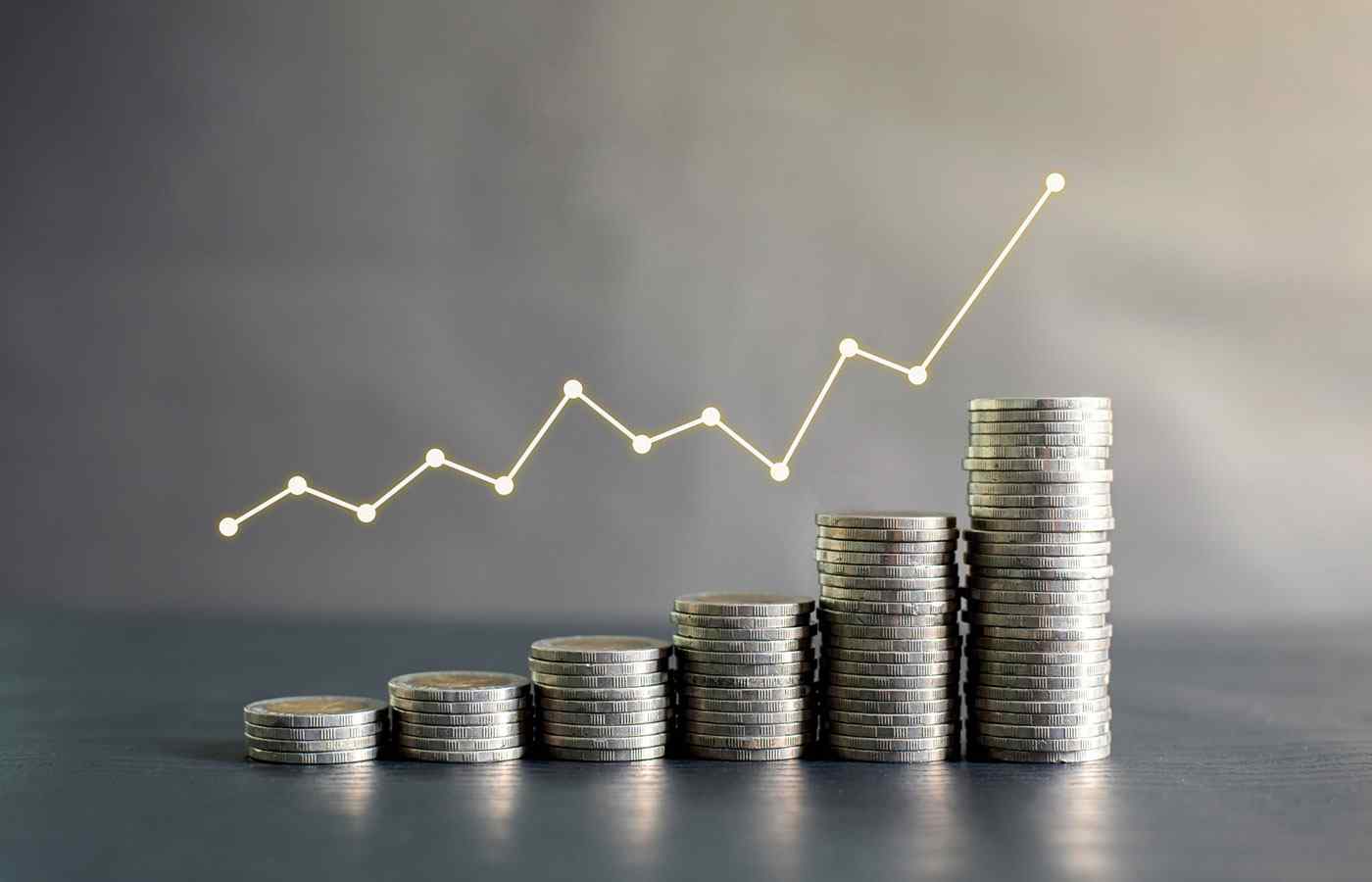UK Inflation hit a 41-year high in late 2022. Last year, gas prices increased by 130%, sending energy prices through the roof, with the cost of electricity surging by 66%. A similar story occurred in the United States, with inflation reaching its highest point since 1981.
Describing its grave nature, US President Ronald Reagan once described it as “violent as a mugger, as frightening as an armed robber and as deadly as a hit man”. This apt description is why one of the core duties of central banks, like the Federal Reserve Bank and Bank of England, is to keep inflation in check.
What is inflation?
Inflation is the loss of purchasing power in a country’s currency. In other words, £1 today is worth more than £1 in the future. And it’s created whenever the price level of goods and services increases beyond the rise in consumers’ purchasing power.
In small doses, inflation can be quite beneficial. A slight and steady decrease in a currency’s value encourages consumers to spend and invest. This helps businesses achieve growth, boosting economic activity. This is why the Federal Reserve target a 2% low inflation rate.
However, problems begin to emerge if too much inflation enters an economy. And some of the ripple effects include:
- Higher unemployment.
- Product scarcity.
- Increased poverty.
- Civil unrest.
- In extreme cases, economic collapse.
What is the current rate of inflation?
What causes inflation?
A myriad of factors can trigger globally rising prices in an economy. However, some of the most common inflation factors include the following:
- Demand-Pull Inflation – This type of inflation is triggered by a rapid rise in demand for a product or service while the available supply remains the same. Product scarcity causes prices to increase as demand outstrips the limited supply.
- Cost-Push Inflation – This is similar to Demand-Pull inflation. Cost-Push is when demand for a product or service remains unchanged, but the available supply becomes compromised. This supply-demand imbalance increases the cost of production, which is ultimately passed onto consumers resulting in higher prices. Following the 2020 pandemic, Cost-Push inflation was responsible for the price increase as supply chains were disrupted globally.
- Built-In Inflation – This is caused by workers demanding higher salaries over time. With the cost of labour increasing, these higher wages ultimately lead to the price level of products and services being hiked to protect profit margins. In extreme cases, this can lead to a wage-price spiral.
- Budget Deficits – Government’s that spend more money than what’s being generated by tax revenue will drive up a national deficit. To cover these costs, central banks may inject capital to increase the money supply in an economy. However, if the economy does not match this expanded money supply with additional goods and services, inflation is created. This is precisely how Germany fell into hyperinflation following the first World War.
How has inflation affected the price of everyday goods
Under normal economic conditions, the effects of inflation can be hard to spot in the short term. But zooming out to entire decades, the impact becomes crystal clear.
Between 1990 and 2019, the average inflation rate of the UK Pound Sterling has been 2.87%. And over this time period, the cumulative effect on prices has been a 127.44% hike. Looking at the last 50 years, the price of everyday consumer stable goods has increased drastically.
| Product | Price (1973) | Price (1983) | Price (1993) | Price (2003) | Price (2013) | Price (2023) |
|---|---|---|---|---|---|---|
| Pasteurised Milk (per pint) | 6p | 21p | 34p | 37p | 46p | 69p |
| Loaf of Bread (800g) | 10p | 38p | 55p | 57p | 131p | 139p |
| Banana (per kg) | 20p | 70p | 93p | 95p | 94p | 92p |
| Draught Lager (per pint) | – | <92p* | 149p | 211p | 322p | 423p |
| Unleaded Petrol (per litre) | – | <38p** | 47p | 76p | 132p | 150p |
*Earliest recorded price for Draught Larger is 92p in February 1987
**Earliest recorded price for Unleaded Petrol is 39p in February 1990
Inflation vs Interest rate
Inflation and interest rates are closely related. Central banks artificially inflate interest rates as a tool for controlling inflation. If the price level of goods and services is rising too rapidly, it raises the cost for banks to borrow from them. This makes lending more expensive, slowing economic growth and encouraging businesses to freeze or even cut prices. The goal is to let economic output catch up to rising prices, ensuring inflation stays under the 2% target rate.
However, if central banks are too aggressive with contractionary monetary policy, the economy can grind to a halt or even begin to shrink. And in some circumstances, this can lead to a recession or, worse, deflation.
The idea of currency regaining its spending power sounds good on the surface. But, it also causes consumers to stop spending as they know the value of their money will increase in the future. As such, the economy can severely contract, decimating growth and leading to a rapid rise in bankruptcies as well as unemployment. That’s why economists fear deflation.
On the other hand, if the Federal Reserve or Bank of England is too loose with expansionary policy, prices may skyrocket, potentially leading to hyperinflation. These financial institutions need to walk a delicate line adjusting interest rates to keep inflation in balance.
Advantages
While inflation is often painted in a bad light, there are several significant benefits that it can provide to an economy.
- Higher Economic Growth – The slow devaluation of money encourages consumers to spend, creating economic growth. That’s why central banks worldwide typically target a 1% to 3% annual inflation rate.
- Higher Asset Value – The value, and subsequently the price level, of certain assets can increase due to inflation. This is most obviously reflected in the rising level of house prices. And this trend can be capitalised on by real estate investors.
- Higher Wages – As the cost of living rises, workers demand higher wages. As inflation also stimulates new business growth, increasing demand for labour creates a competitive landscape for negotiating salaries. Meanwhile, salaries in many European countries are linked to inflation price indices.
- Easier To Repay Debts – As a currency loses its spending power, older loans, especially those on a fixed interest rate, become easier to repay. In extreme conditions of hyperinflation, rapid currency devaluations may eliminate debts entirely as the cost of collecting them exceeds the value of the debt itself.
Disadvantages
Even though inflation may stimulate economic growth, there are also economic setbacks that can be pretty severe.
- Higher Prices For Goods & Services – As inflation drives up the cost of raw materials, production costs for products and services increase. Consumers will lose purchasing power if this increase exceeds the rise in workers’ salaries.
- Devaluation of Retirement Savings – Inflation can adversely affect an individual’s retirement savings regarding spending power. If a pension portfolio fails to grow at a pace faster than annualised inflation, wealth is being destroyed even if an account balance is rising.
- Economic Uncertainty – As the cost of living increases, consumers often become more conservative with spending on discretionary items. This can negatively impact economic growth, encouraging more bearish behaviour for consumers and investors alike, creating a diminishing cycle.
How to measure inflation?
Economists have created various price indices to track and measure the level of inflation over time.
- Consumer Price Index (CPI) – Tracks the average change in the price of the basket of goods and services purchased by households. Reported monthly.
- Wholesale Price Index (WPI) – Trcks inflation changes in production. It is the weighted average change in the price of a representative basket of manufactured goods before they are retailed. Reported monthly.
- Producer Price Index (PPI) – Tracks the average changes over time in prices received by domestic producers for their goods and services. Reported monthly.
- Personal Consumption Expenditures Price Index (PCE) – Tracks the consumer’s range of expenses and how the consumer reacts to these changes. Reported monthly.
- Harmonized Index of Consumers Prices (HICP) – Tracks the change in the price of consumer goods and services purchased by households in European Union countries. Reported twice a month.
The bottom line
For inflation to occur, there must be a continuous increase in the price of entire goods and services in the economy. Therefore, an isolated rise in the price of a commodity is not inflation. It affects producers, products, and consumers in no small way when left unchecked. But in small doses, inflation can help stimulate growth and help sustain increased economic activity.
Discover market-beating stock ideas today. Join our Premium investing service to get instant access to analyst opinions, in-depth research, our Moonshot Opportunities, and more. Learn More
This article contains general educational information only. It does not take into account the personal financial situation of the reader. Tax treatment is dependent on individual circumstances that may change in the future, and this article does not constitute any form of tax advice. Before committing to any investment decision, an investor must consider their individual financial circumstances and reach out to an independent financial advisor if necessary.





